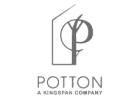So you’ve placed your job with a printer, you’ve given them your file and you’re ready for the next step – you’ll most likely want to get a proof sorted for your artwork – so you are sure what you’re having printed is exactly the way you want it

If you’re new to this, proofing may seem a daunting task. Don’t worry. Follow the below guidelines for a little help along the way. These are the different types of proofs and the pros & cons associated with them.
PDF Proofs
This is the quickest and easiest proof to receive through the print process. A RIP’d proof meaning a proof that has been generated through the Raster Image Processing (a process that converts a file ready for print). This proof is perfect if you’re sure of the item you are printing – for example a reprint.
Content Proof or Lo Resolution Proof
These, as it would suggest, are for content only, it will give you an overall view of your printed piece. Used effectively you could have a lo resolution proof for a large text based print run. Great for approving layout.
Scatter Proof
These are typically used in the design process and are almost 90% colour accurate. Given the name they are proofs created from random parts of a job and placed onto a proofing sheet.
Hi Resolution Proof
A hi res proof again is almost 90% colour accurate. Used to give a good impression of the final product. Although a wide variety of colours can be reproduced – Pantone colours are not always shown accurately.
It’s always good to remember that proofs while being as accurate as they can be – will always have slight variance from the finished item. The variance in paper/ink/machines all contribute to slight variance when produced.
































































